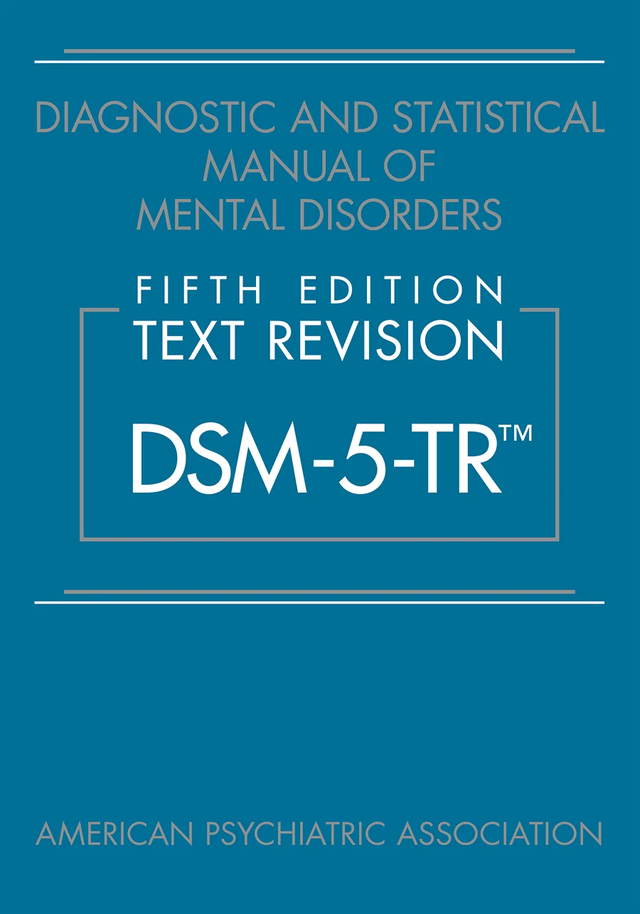10.1 Mental Health

Are you currently in “good” health?
Research shows that many (if not most) Americans automatically consider physical symptoms or the absence of illness to answer this question. Although many Americans will acknowledge the importance of stress management and mental wellness to being productive, there remains a tendency to highlight physical well-being and avoid acknowledging mental distress.
In this lesson, we explore the more commonly diagnosed mental disorders and discuss the influence of culture in making a diagnosis and dispelling common misconceptions. We will also look at trauma, types of trauma, and the effects of trauma on the individual.
Learning Objectives
- Distinguish between common categories of mental illness seen worldwide, including MDD, anxiety disorders, eating disorders, and schizophrenia.
- Describe how mental illness can impact one’s life.
- Identify common barriers to receiving mental health treatment, both within the United States and worldwide.
- Highlight cultural considerations in the diagnosis and treatment of mental disorders.
This lesson covers the topic of mental health, mental illness, and treatment, and takes into account cultural considerations in assessing and diagnosing mental illness. Mental health is the successful performance of mental function, resulting in productive activities, fulfilling relationships with other people, and providing the ability to adapt to change and cope with adversity. A mental illness is a diagnosable condition that is characterized by alterations in thought, mood, and behavior that cause distress or impair one’s ability to function. Mental health and mental illness are related terms, and the two are not mutually exclusive. A person with poor mental health will not necessarily have a mental illness, and a person with a mental illness can have good mental health.
Mental health problems can have any number of sources, including mental illnesses such as ADHD, mood disorders, or anxiety, but they can also stem from such normal states and events as grief at the death of a loved one, loneliness, stress, and relationship problems. Mental illness can be treated, and mental health can be managed through counseling, medication, and/or therapy prescribed and carried out by therapists, social workers, psychologists, psychiatrists, nurse practitioners, and general practitioners.
Mental health is a socially constructed and socially defined concept; that is, different societies, groups, cultures, institutions, and professions have very different ways of conceptualizing its nature and causes, determining what is mentally healthy, and deciding what interventions, if any, are appropriate.
What is Mental Illness?
A psychological disorder is a condition characterized by abnormal thoughts, feelings, and behaviors. Psychopathology is the study of psychological disorders, including their symptoms, etiology (their causes), and treatment. The term psychopathology can also refer to the manifestation of a psychological disorder. Although consensus can be difficult, it is extremely important for mental health professionals to agree on what kinds of thoughts, feelings, and behaviors are truly abnormal in the sense that they genuinely indicate the presence of psychopathology. Certain patterns of behavior and inner experience can easily be labeled as abnormal and clearly signify some kind of psychological disturbance. The person who washes his hands 40 times per day and the person who claims to hear the voices of demons exhibit behaviors and inner experiences that most would regard as abnormal: beliefs and behaviors that suggest the existence of a psychological disorder. Now consider the nervousness a young man feels when talking to attractive women or the loneliness and sadness a freshman experiences during her first semester of college—these feelings may not be regularly present and would fall in the range of normal. So, what kinds of thoughts, feelings, and behaviors represent a true psychological disorder? Psychologists work to distinguish psychological disorders from inner experiences and behaviors that are merely situational, idiosyncratic, or unconventional.

Progress in the treatment of mental illness necessarily implies improvements in the diagnosis of a mental disorder. While diagnoses were recognized as far back as the Greeks, it was not until 1883 that German psychiatrist Emil Kräpelin (1856–1926) published a comprehensive system of psychological disorders that centered around a pattern of symptoms (i.e., syndrome) suggestive of an underlying physiological cause. Other clinicians also suggested popular classification systems, but the need for a single, shared system paved the way for the American Psychiatric Association’s 1952 publication of the first Diagnostic and Statistical Manual (DSM). The Diagnostic and Statistical Manual of Mental Disorders is the standardized diagnostic classification system in the U.S. It contains agreed-upon definitions of psychological disorders, creates a shared language among mental-health professionals, and aids in clinical research. The most recent version is the fifth edition (DSM-5-TR). Each revision reflects an attempt to help clinicians streamline diagnosis and work better with other diagnostic systems, such as health diagnoses outlined by the World Health Organization.
Making a Diagnosis: The 3 D’s
While the concept of mental or psychological disorders is difficult to define and no definition will ever be perfect, it is recognized as an extremely important concept and therefore psychological disorders (also known as mental disorders) have been defined as a psychological dysfunction which causes distress or impaired functioning and deviates from typical or expected behavior according to societal or cultural standards. The definition includes three components (3 D’s) used by psychologists and other therapists to diagnose psychological disorders: dysfunction, distress, and deviance.

Dysfunction is defined as a clinically significant disturbance in an individual’s cognition, emotion regulation, or behavior that reflects a dysfunction in the psychological, biological, and/or developmental processes underlying mental functioning. In other words, dysfunction refers to a breakdown in cognition, emotion, and/or behavior. For instance, an individual experiencing the delusion that he is an omnipotent deity would have a breakdown in cognition because his thought processes are not consistent with reality. An individual who is unable to experience pleasure would have a breakdown in emotion. Finally, an individual who is unable to leave her home and attend work due to fear of having a panic attack would be exhibiting a breakdown in behavior.
Distress can take the form of psychological or physical pain, or both concurrently. Simply put, distress refers to suffering. Alone, though, distress is not sufficient to describe behavior as abnormal. Why is that? The loss of a loved one would cause even the most “normally” functioning individual pain and suffering. An athlete who experiences a career-ending injury would display distress as well. Suffering is part of life and cannot be avoided. Impairment refers to when a person experiences a disabling condition in social, occupational, or other important activities. In other words, impairment refers to when a person loses the capacity to function normally in daily life (e.g., can no longer maintain minimum standards of hygiene, pay bills, attend social functions, or go to work).

Deviance is any behavior that differs significantly from what is considered appropriate or typical for a social group. Though not part of the DSM-5’s conceptualization of what abnormal behavior is, many clinicians add a 4th D—dangerousness—to this list. Dangerousness refers to when an individual’s behavior presents a threat to the safety of themselves or others. Individuals expressing suicidal intent, those experiencing acute paranoid ideation combined with aggressive impulses (e.g., wanting to harm another person or group of people), and individuals with antisocial personality disorder may be considered dangerous. Mental health professionals and other professionals who work with the community, such as teachers, social workers, medical professionals, and researchers, have a duty to report to law enforcement when an individual expresses an intent to harm themselves or someone else. Nevertheless, individuals with depression, anxiety, and obsessive-compulsive disorder are typically no more of a threat to others than individuals without these disorders. As such, it is important to note that having a mental disorder does not automatically mean a person is dangerous; conversely, not all dangerous individuals suffer from a diagnosable mental illness.
What Is Considered Normal?
What is considered “normal” by society can change over time due to shifts in accepted values and expectations. For instance, just a few decades ago, homosexuality was considered taboo in the U.S., and it was included as a mental disorder in the first and second editions of the DSM. Today, however, it is generally accepted. Likewise, any public display of affection does not cause a second look by most people, unlike the past when these outward expressions of love were restricted to being conducted in private. In the U.S., crying is generally seen as a weakness for males, but if the behavior occurs in the context of the loss of a loved one or a tragic event, then it is appropriate and understandable.

Overall, it is important to recognize that cultural norms change over time. What might be considered typical in a society at one time may no longer be viewed this way later, similar to how fashion trends from one era may elicit quizzical looks decades later—imagine how a headband, legwarmers, and the big hair of the 1980s would go over on your campus today. Furthermore, abnormality alone is not an indication of a disorder or “problem.”
Deviance: Crash Course Sociology (open YouTube video in new tab)
History of Mental Illness
References to mental illness can be found throughout history. The evolution of mental illness, however, has not been linear or progressive but rather cyclical. Whether a behavior is considered normal or abnormal depends on the context surrounding the behavior, and thus changes as a function of a particular time and culture.
In the past, uncommon behavior or behavior that deviated from the norms and expectations of the surrounding culture and time period has been used as a way to silence or control certain individuals or groups. As a result, the view of abnormal behavior now focuses on whether a behavior poses a threat to self or others, or causes so much pain and suffering in the individual that it interferes with their ability to effectively function at work, school, or in other social settings, and/or significantly affects the person’s relationships with family and friends.
Similar to how the criteria for diagnosing a mental illness have evolved, so too have the methods used to treat mental illness. Etiological theories determine the care and treatment that individuals suffering from a mental illness will receive. Throughout history, there have been three general theories of the etiology (cause) of mental illness:
- Supernatural theories attribute mental illness to possession by evil or demonic spirits, the displeasure of gods, eclipses, planetary gravitation, curses, and sin.
- Somatogenic theories identify disturbances in physical functioning resulting from either illness, genetic inheritance, brain damage, or imbalance.
- Psychogenic theories focus on traumatic or stressful experiences, maladaptive learned associations and cognitions, or distorted perceptions.
From the practice of trepanation—scraping a hole into the skull—used by tribes during the Stone Age to the use of restraints and isolation, the treatment of mental illness has changed dramatically throughout history. As late as the 18th century, people who were seen as mentally ill were sent to asylums used primarily to house and confine the mentally ill, the poor, the homeless, the unemployed, and the criminal. The view of insanity at the time likened the mentally ill to animals who did not have the capacity to reason, could not control themselves, were capable of violence without provocation, did not have the same physical sensitivity to pain or temperature, and could live in miserable conditions without complaint.
The video below describes trepanation as well as several other practices that turned out to be harmful rather than helpful based on society’s understanding of the body and wellness.
5 Most Disturbing & Barbaric Medical Treatments In History (open YouTube in new tab)
Today, etiological theories coexist in what psychologists and other mental health professionals hold as the biopsychosocial model, which looks at the interconnection between biology, psychology, and socio-environmental factors. While some individuals may be born with a genetic predisposition for a certain psychological disorder, certain environmental or psychological stressors may also be present for them to develop the disorder. Sociocultural factors such as sociopolitical or economic unrest, poor living conditions, or problematic interpersonal relationships are also viewed as contributing factors.
Culture-Bound Disorders
It was previously thought that some mental illnesses were only present within a specific culture, society, racial, or ethnic group.
However, the DSM‐5-TR discarded the concept of culture‐bound syndromes with a preference for the term cultural concepts of distress, which can be defined as ways cultural groups experience, understand, and communicate suffering, behavioral problems, or troubling thoughts and emotions (APA, 2013). Recognizing cultural concepts of distress is crucial for accurate diagnosis and culturally sensitive treatment. Clinicians need to be aware of how cultural factors can influence symptom presentation and help-seeking behaviors. Some examples include ataque de nervios, often seen in Latin American cultures, involving symptoms like trembling, uncontrollable shouting, and a sense of heat rising in the chest. Common in Japan, Taijin kyofusho involves intense fear of offending or harming others through one’s appearance or actions.
The term culture-bound syndrome has, in many ways, been a controversial topic since it has reflected the different opinions of anthropologists and psychiatrists. Anthropologists have a tendency to emphasize the relativistic and culture-specific dimensions of the syndromes, while physicians tend to emphasize the universal and neuropsychological dimensions (Prince, 2000; Jilek, 2001). Guarnaccia & Rogler (1999) have argued in favor of investigating culture-bound syndromes on their own terms, and believe that the syndromes have enough cultural integrity to be treated as independent objects of research.
Changes to society in the last decade, including technological advancements and increased globalization, have broadened cross-cultural influences and reduced cultural isolation. Recent changes to the DSM-5 (went from 25 disorders to 9 disorders) and the ICD-11 suggest a trend toward better understanding cultural influences rather than “culture-specific.” Some researchers, including Ventriglio et al. (2016), argue that this interconnection calls into question our perception of truly “culture-specific” conditions. Idioms and culture-specific descriptions of disorders often overlap with symptoms seen in another culture (just called something else). Rather than disorders being confined to specific cultures, the emphasis has changed to better recognition of the expression of symptoms and sources of distress within each culture in order to better shape health care and treatment.
Test your understanding
Media Attributions
- image-444d1a36-245c-457c-b037-ed3f90f33382 © Geisteskerker is licensed under a CC BY (Attribution) license
- DSM-5-TR_Cover.webp © APA is licensed under a Public Domain license
- image-4b7f6f8d-f941-4217-a300-f22b5f8c7685 © moritz320 is licensed under a CC BY (Attribution) license
- image-b073e6a7-5828-490c-8fd1-b7277c440c19 © Myriams-Fotos is licensed under a CC BY (Attribution) license
- happy-valentines-day-1807617_1280 © sasint is licensed under a CC BY-SA (Attribution ShareAlike) license

